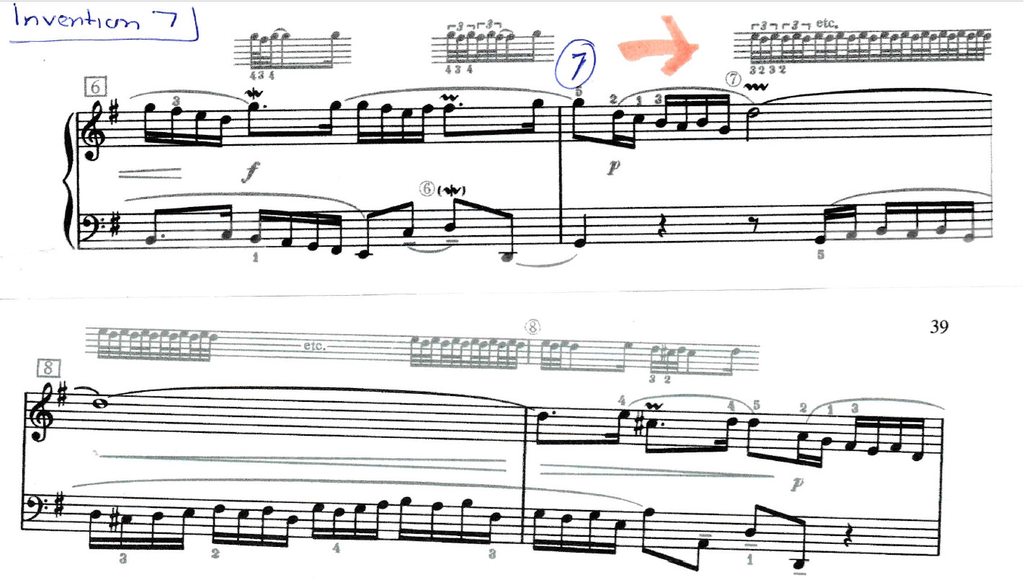I don't know if I'll manage to get my thoughts out in a first shot. I'll start with something related that I did master a few years ago. The 2 against 3 and vice versa in the Debussy Arabesque I, what did not work was counting 1 2 & 3, or "not dif-fi-cult" which had worked for slower music. It was too fast for that (as one teacher also suggested) and I found other ways. I played one hand, then the other for sections, counted one while letting the other flow; finally making it musical. Counting everything? The notes whizzed by too fast.
I'm looking at long trills in the Baroque period where things are more regular and more "counted". I've always done the trill the swells and drops off in more modern music, intuitively before I knew anything. I'm aiming for Baroque because I want to gain better control through the more "precise" or measured playing. I've been playing with this part of Invention 7 shown below.
I know that triple time is just a suggestion. The suggested tempo is (quarter) = 60-69; Wanda Landowska goes close to 50 and I might be happy with 40 or 45 first time round. If I try those triplets - for the higher and lower finger you go H,L,H - L,H,L which messes up my brain; but 6 of them as H,L,H,L,H,L means I'm starting each 'set' with the same finger. So I figured that focusing on the first of every 6 might be a way of staying on track. I don't know what people actually do.
Then I also wonder how "regular", regular actually is for this kind of music. If I "get it going", I'd start the first note a bit slowly and then settle into the triplets and then my fingers are just doing their thing while I'm focusing on making the LH notes even. I'm picturing the trill "doing its thing" until it gets near the finishing bit which has to end the right way in the right time. So if opting for triplet-speed trills, does it become "precisely triplets", or sort of "triplet-ish" (if you deviate, it's miniscule). If precise, do you aim to make every note precise, or make sure that the 1st (or 7th) of every set lines up? I'm kind of in the same place as the Arabesque, where counting everything didn't work at a faster tempo.
